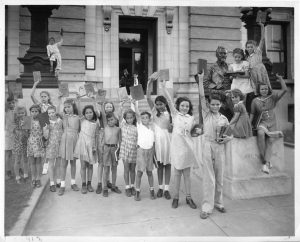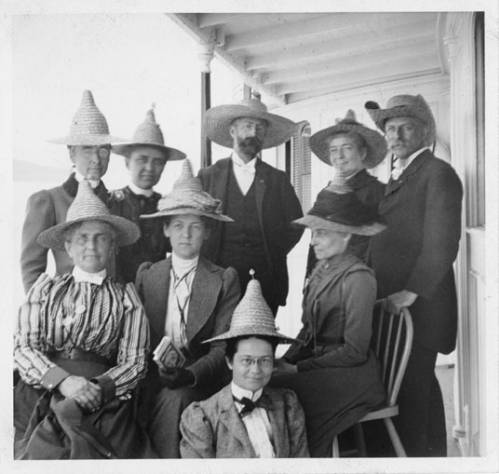
With its approaching centennial in 1976, the American Library Association noticed the increased interest in the history of the librarianship and the association by historians, writers and archivists. Because of this greater awareness in their records, the ALA expressed concern over the management of their archives and the preservation of their history. At the time, most of the ALA archives were housed in a warehouse in Chicago and, while it was conveniently located near ALA Headquarters, the records were not easily accessible. The ALA Librarian and staff had worked hard to care for the archives, however it was a great task in addition to their other obligations. [1]
University of Illinois Archivist, Maynard Brichford, observed the state of the ALA archives:
“While the devoted concern of staff librarians has protected the Archives and facilitated their use by scholars, the essential elements of archival control are lacking. The records are housed in an open warehouse area … There are several inventory listings, but there has been no processing to identify the contents of files, arrange them according to provenance and remove rubber bands, paper clips and duplicate material. Researchers pore over documents in the corner of a loft.” [2]
With a need for better access, preservation, and management of these records, the ALA sought out an archival repository. A strong argument was made for transferring the records to the University of Illinois. Brichford made a case for the Urbana-Champaign campus, emphasizing its holdings on the areas of librarianship and library history. [3] While the Chicago Circle campus was closer to ALA Headquarters, Urbana-Champaign’s library and other archival holdings, along with the Graduate School of Library Science and the participation of its staff and faculty in ALA, made it a desirable location.
In preparation to transfer their records to an archival repository, it was suggested that the ALA staff not spend too much time organizing or weeding the archives as: “American archival training inculcates an abhorrence of librarians ‘organizing’ or ‘arranging’ archives.” It was also suggested that by refraining from doing their own arranging would save the ALA some grief, “Instances of library organization of archival material usually send [archivists] into lengthy discourses on the ‘sanctity of original order’ and the ‘principle of provenance.'” [4]
After discussions with Brichford, the ALA and the University of Illinois entered a three year contract to house the records at the Urbana-Champaign campus. In October of 1973, the ALA announced the transfer of its archives from Chicago to Urbana-Champaign. [5] By November of 1973, the ALA Archives had 16.5 cubic feet of processed archival material ready for research and Brichford had just purchased shelving to accommodate 1,078 cubic feet of records to be housed in the basement of the Child Development Laboratory on campus. [6]

40 years later, the ALA Archives are still located at the University of Illinois at Urbana-Champaign and has expanded to roughly 3,000 cubic feet, most of which is now located at the Archives Research Center. The archives remains heavily used by ALA staff and members, along with the general public. ALA staff and members frequently use the archives to research the history of their offices, sections, committees, and roundtables, often seeking out the origin of their group, hunting down changes in policy, or working on their own publications. Scholars, students and the public also make use of these records, drawn to the wide breadth of activities, social issues, and events that the ALA has engaged in, and sometimes traveling from across the world to access the archives.
Sources:
1. Draft Report on ALA Archives, September 1971, Library Advisory Committee Minutes & Correspondence, 1967-1980, Record Series 18/1/1, Box 1, Folder: ALA Archives Correspondence, 1967-72, American Library Association Archives.
2. Maynard Brichford to David Clift, December 21, 1971, Library Advisory Committee Minutes & Correspondence, 1967-1980, Record Series 18/1/1, Box 1, Folder: ALA Archives Correspondence, 1967-72, American Library Association Archives.
3. Ibid.
4. Draft Report on ALA Archives, September 1971.
5. American Library Association Press Release, October 31, 1973, Library Advisory Committee Minutes & Correspondence, 1967-1980, Record Series 18/1/1, Box 1, Folder: ALA Archives Correspondence, 1973-74, American Library Association Archives.
6. American Library Association Archives Quarterly Report, September 1-November 30, 1973, Library Advisory Committee Minutes & Correspondence, 1967-1980, Record Series 18/1/1, Box 1, Folder: ALA Archives – Maynard Brichford Reports, 1973-1977, 1980, American Library Association Archives.